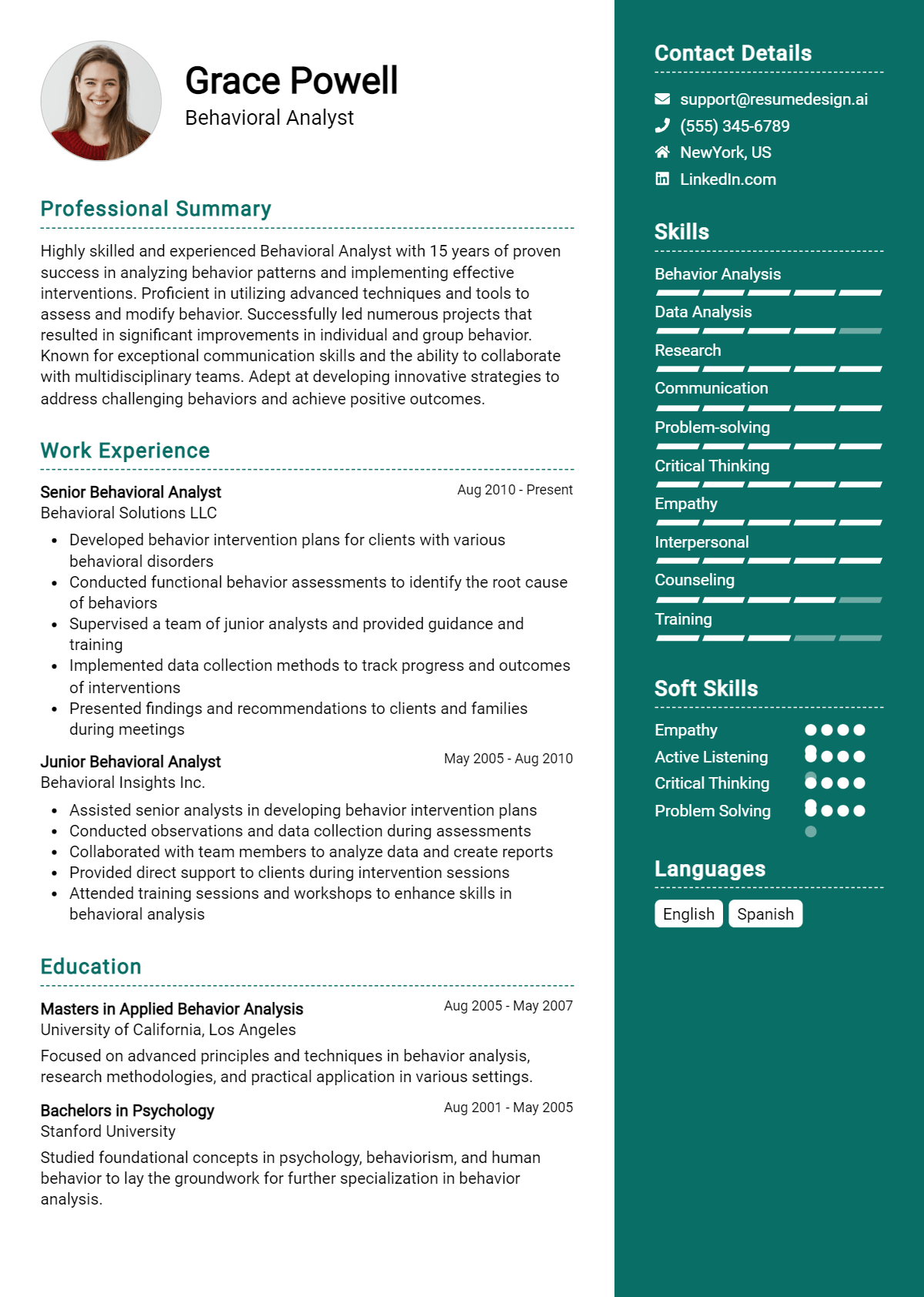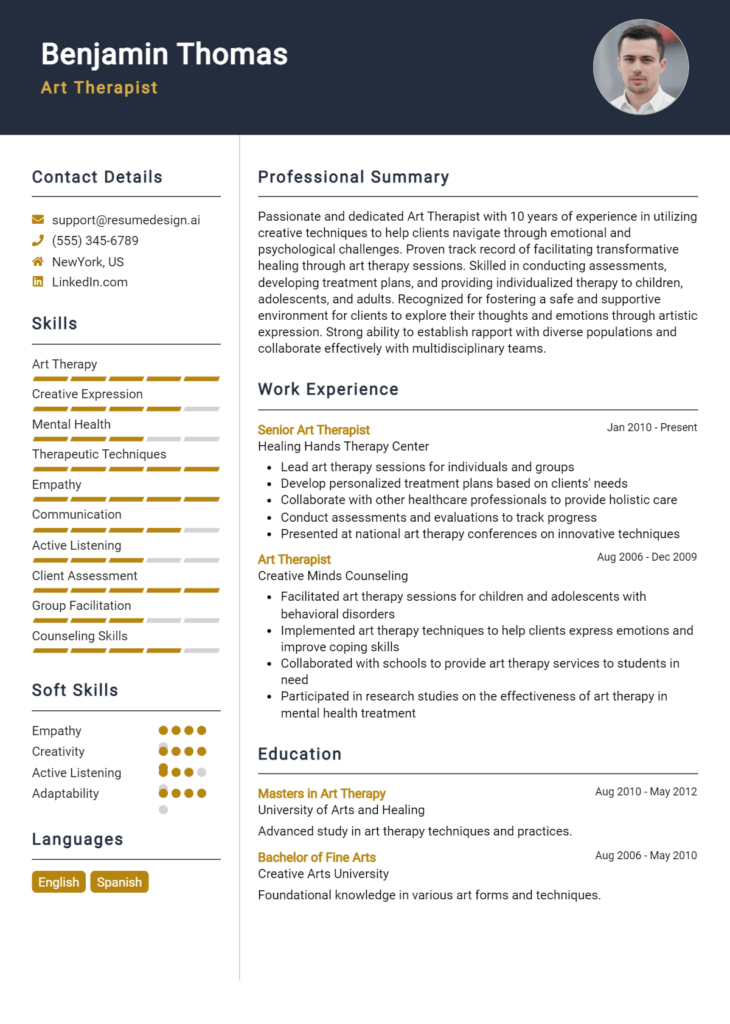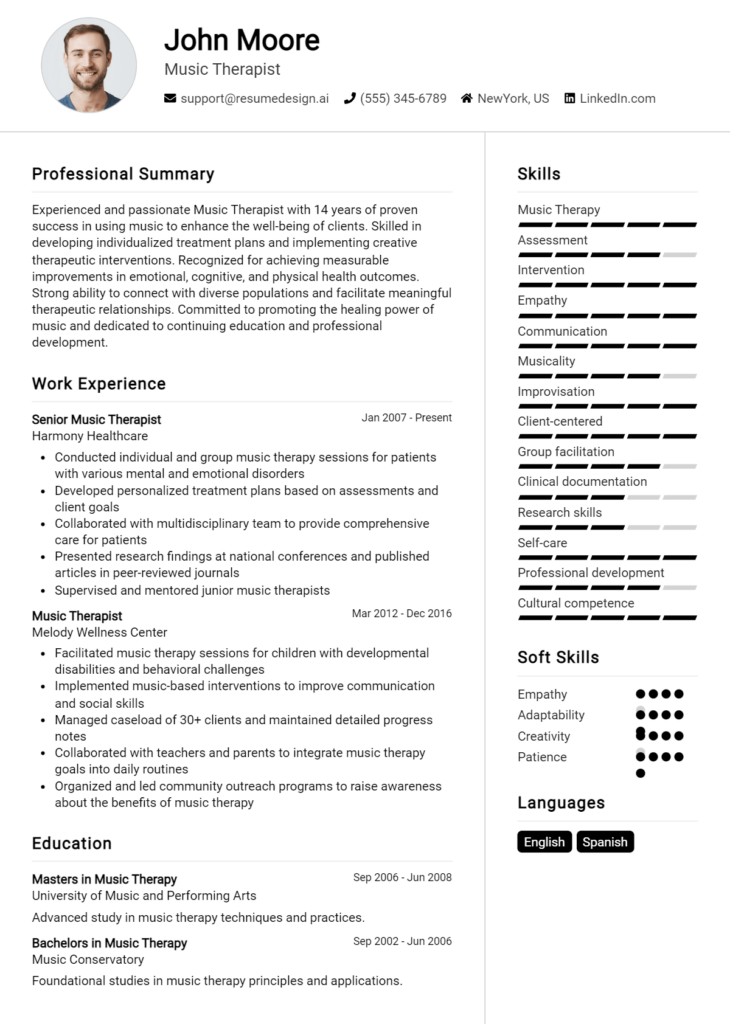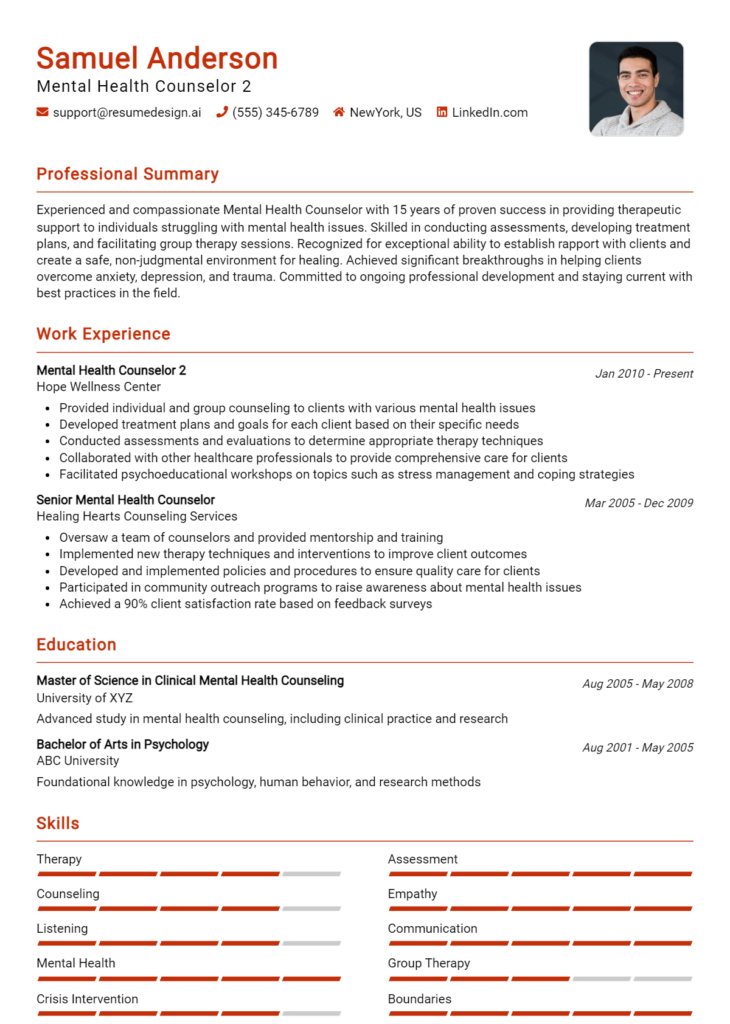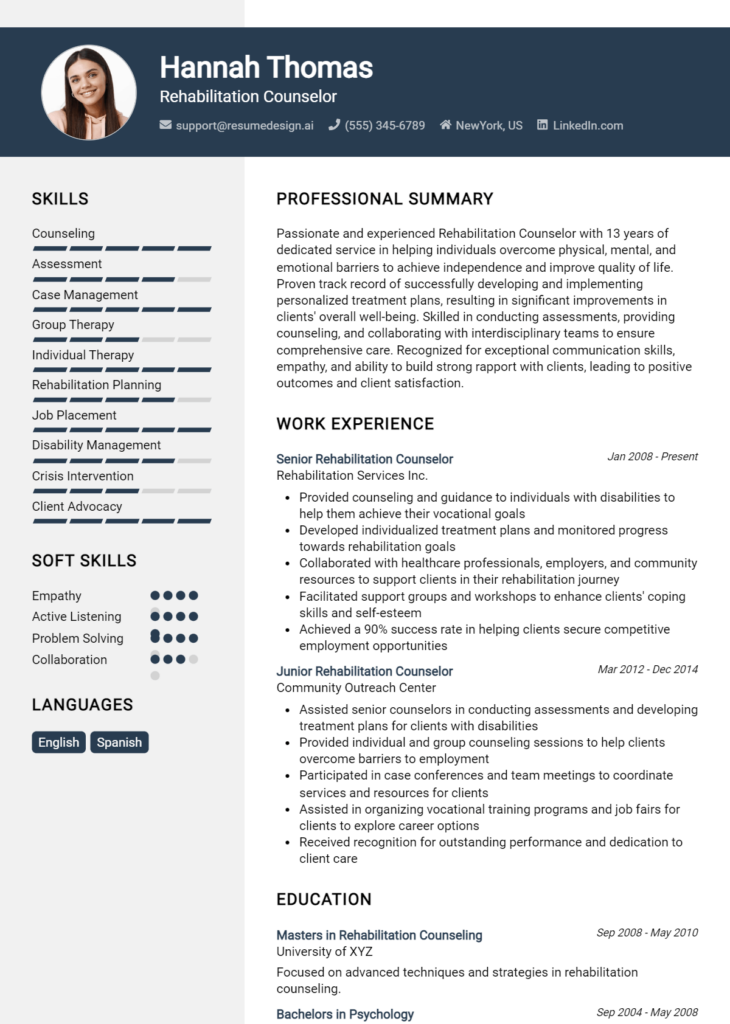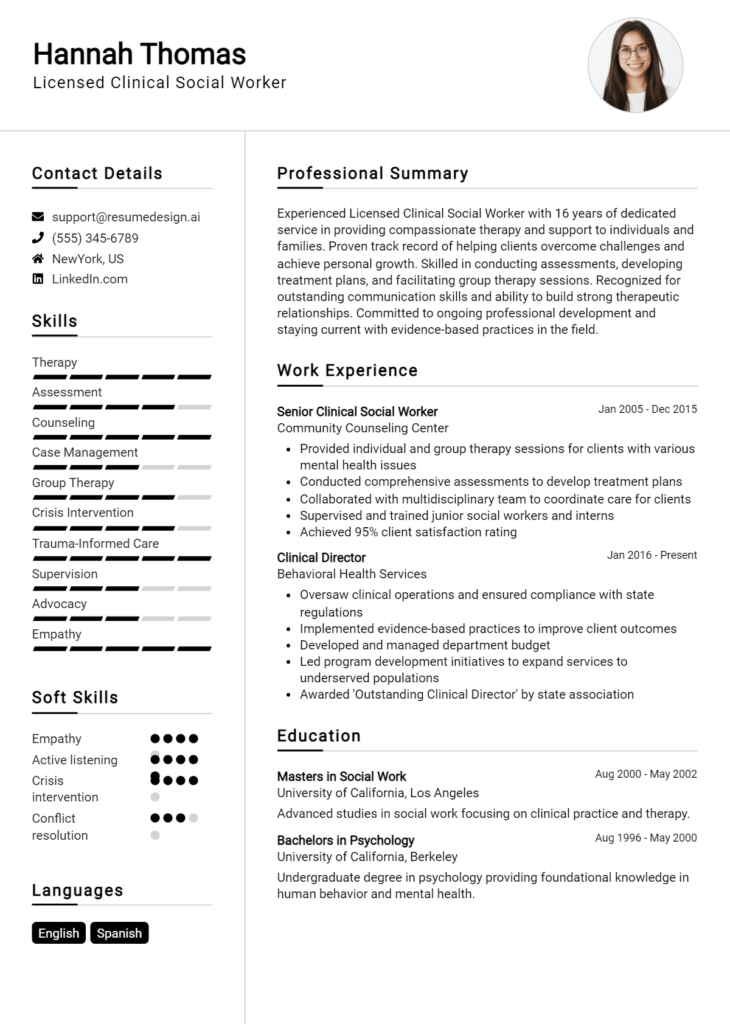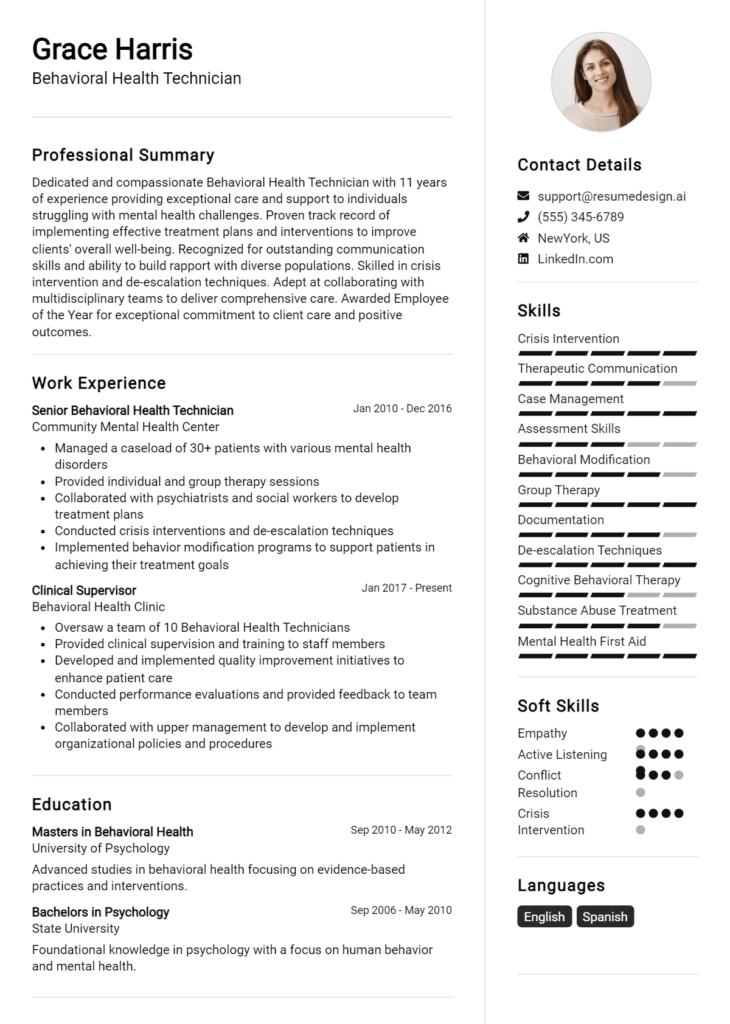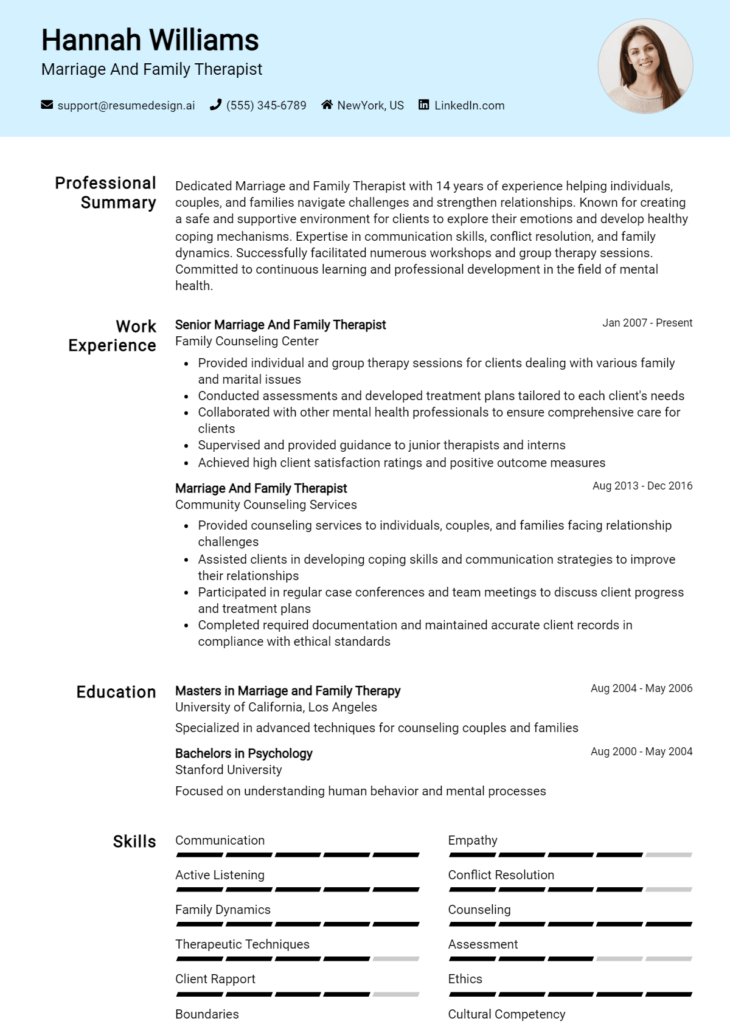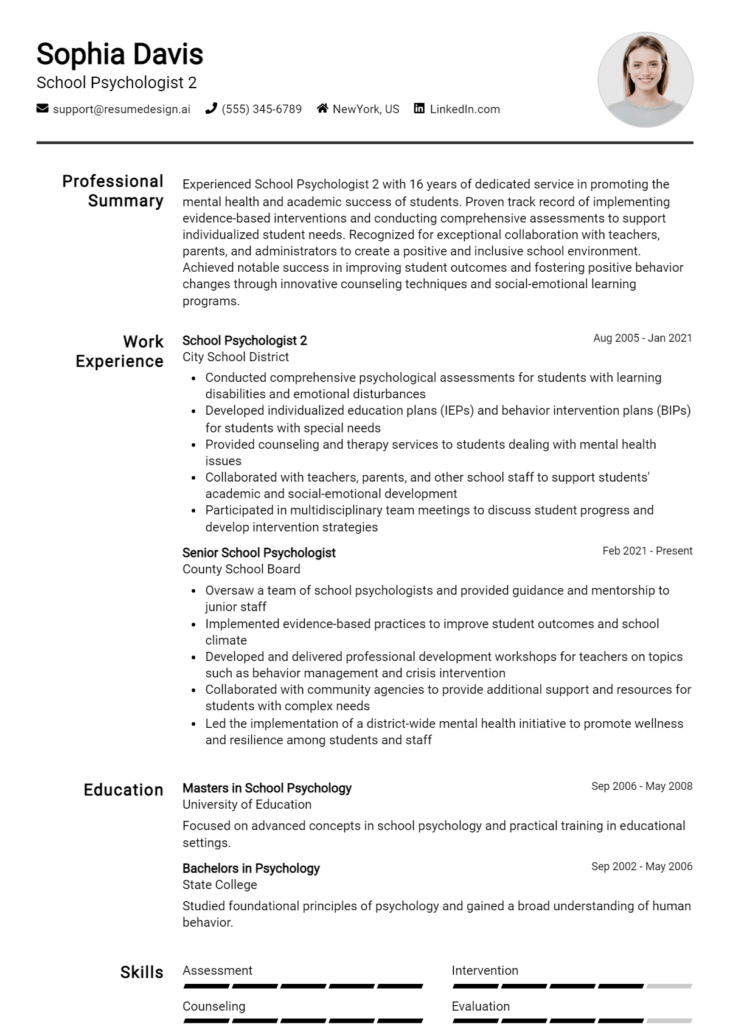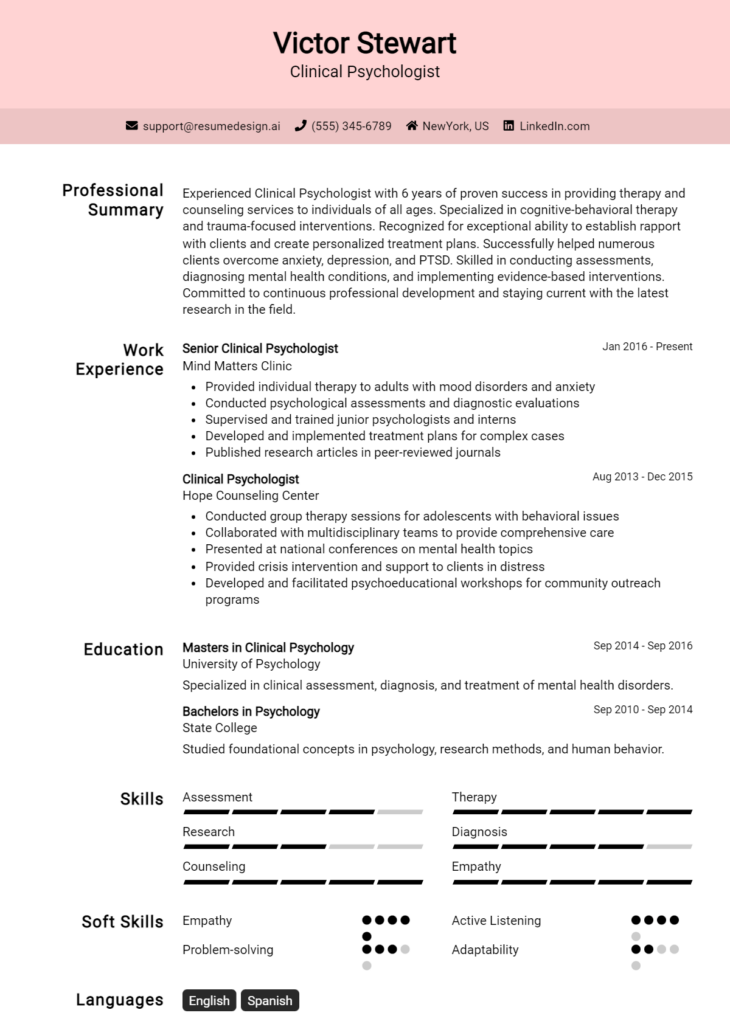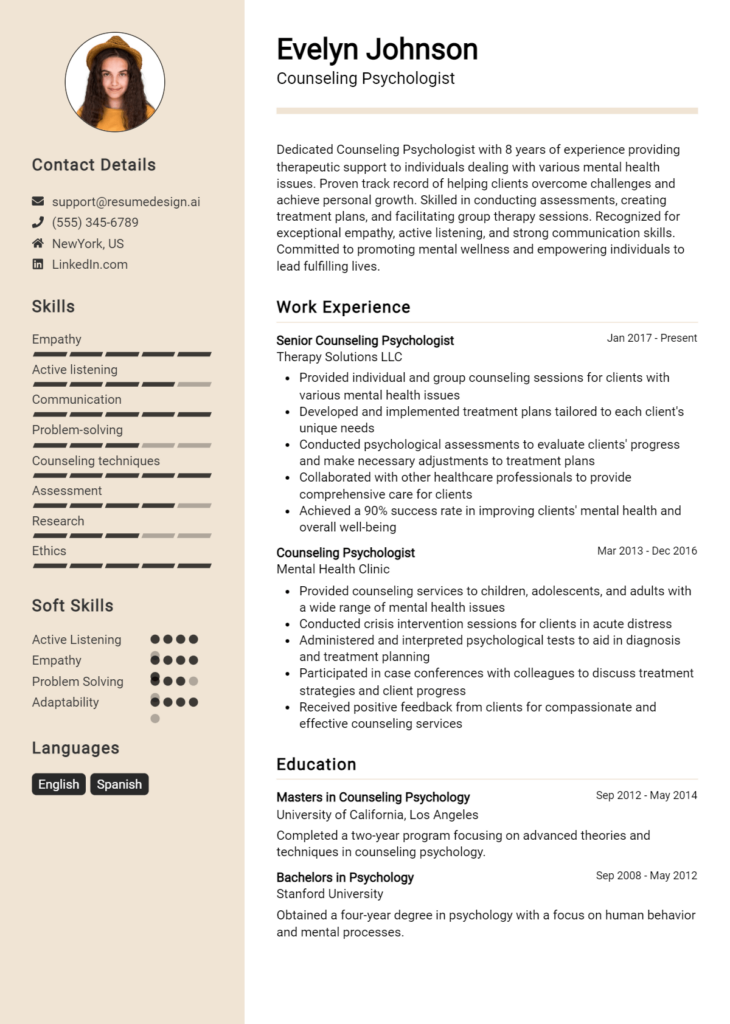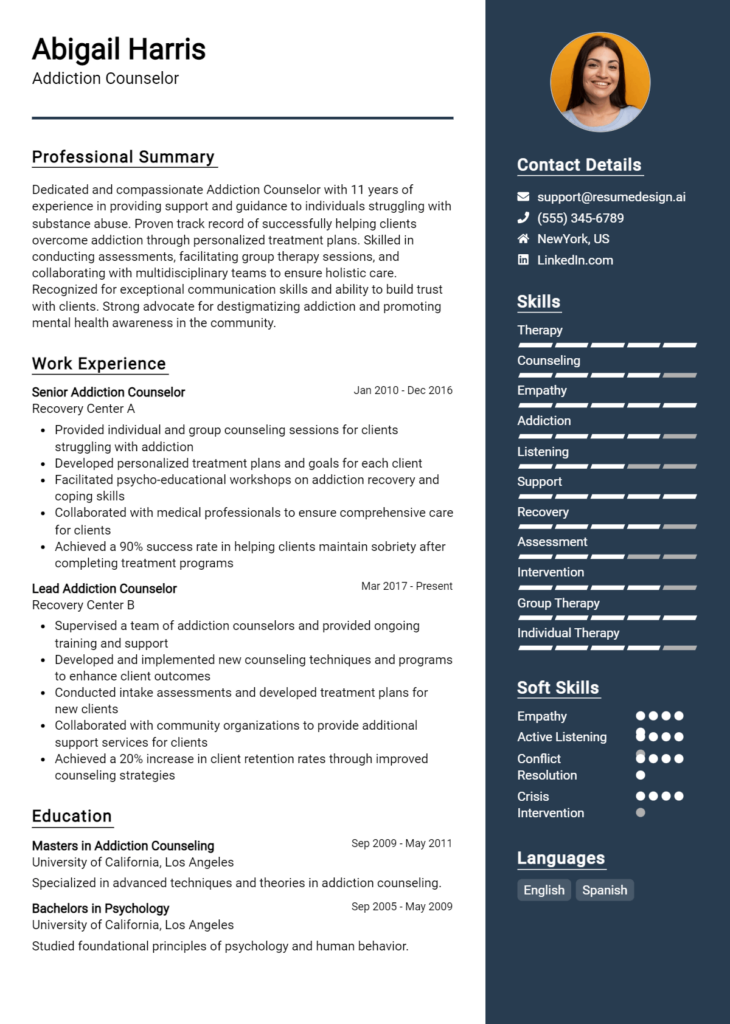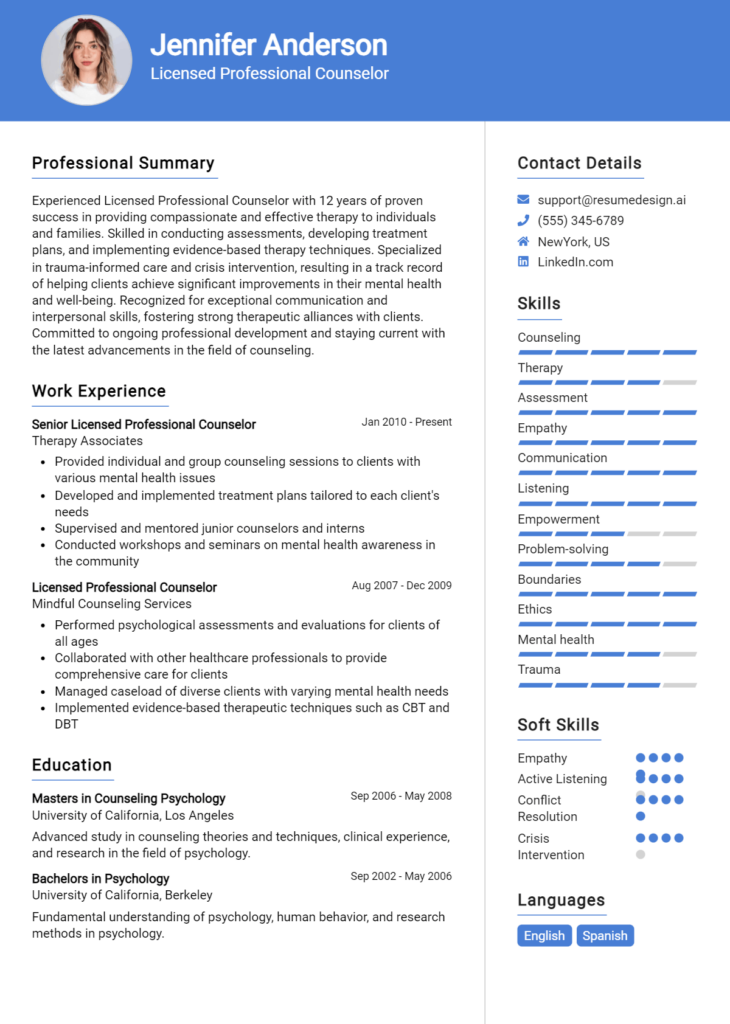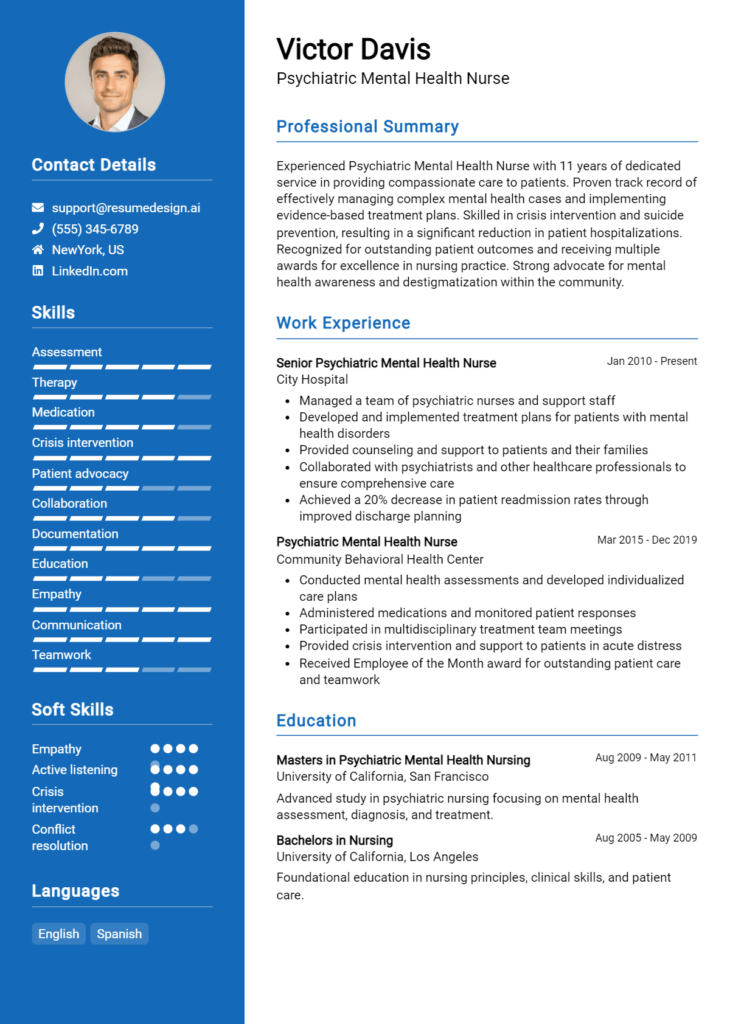Behavioral Analyst Core Responsibilities
A Behavioral Analyst plays a crucial role in assessing and interpreting behavioral data to enhance organizational effectiveness. Key responsibilities include analyzing behavior patterns, developing intervention strategies, and collaborating across departments to address behavioral issues. Essential skills encompass technical expertise in data analysis, operational efficiency, and strong problem-solving abilities. These competencies are vital for achieving the organization's goals. A well-structured resume can effectively highlight these qualifications, demonstrating the candidate's readiness to contribute meaningfully to the team.
Common Responsibilities Listed on Behavioral Analyst Resume
- Conduct behavioral assessments and evaluations
- Design and implement behavior intervention plans
- Analyze data to identify trends and patterns
- Collaborate with multidisciplinary teams
- Train staff and stakeholders on behavioral strategies
- Monitor and adjust interventions based on progress
- Prepare detailed reports and documentation
- Provide expert guidance on behavior-related issues
- Stay updated on behavioral research and methodologies
- Facilitate workshops and training sessions
- Engage in continuous professional development
High-Level Resume Tips for Behavioral Analyst Professionals
In the competitive field of behavioral analysis, a well-crafted resume is not just a document; it is your first opportunity to make a lasting impression on potential employers. As a Behavioral Analyst, your resume should effectively showcase your unique skills, relevant experiences, and significant achievements, all while reflecting your understanding of the industry's demands. A strong resume can lead to job interviews and career advancement, making it essential for candidates to present themselves in the best light. This guide will provide practical and actionable resume tips specifically tailored for Behavioral Analyst professionals, helping you stand out in a crowded job market.
Top Resume Tips for Behavioral Analyst Professionals
- Tailor your resume to the specific job description by incorporating keywords and phrases from the listing.
- Highlight relevant experience in behavioral analysis, including internships, research projects, and professional roles.
- Quantify your achievements by using metrics and data to demonstrate the impact of your work, such as improved client outcomes or increased efficiency.
- Showcase industry-specific skills, such as data analysis, behavioral assessment, and intervention strategies.
- Include certifications and licenses relevant to behavioral analysis, such as Board Certified Behavior Analyst (BCBA) or Registered Behavior Technician (RBT).
- Utilize a clear, professional format that enhances readability and draws attention to key information.
- Incorporate a summary statement at the top of your resume to succinctly convey your career goals and unique qualifications.
- List any professional development activities, workshops, or conferences attended that are relevant to your field.
- Consider adding a section for publications or presentations if you have contributed to research in behavioral analysis.
By implementing these tips, you can significantly enhance your resume and increase your chances of landing a job in the Behavioral Analyst field. A targeted and well-organized resume not only highlights your qualifications but also demonstrates your commitment to the profession, making you a more attractive candidate to potential employers.
Why Resume Headlines & Titles are Important for Behavioral Analyst
In the competitive field of behavioral analysis, a well-crafted resume headline or title serves as a critical first impression for potential employers. A strong headline can immediately grab the attention of hiring managers, succinctly summarizing a candidate's key qualifications in one impactful phrase. It is essential that this headline is concise, relevant, and directly related to the job being applied for, as it sets the tone for the rest of the resume and can significantly influence the hiring decision.
Best Practices for Crafting Resume Headlines for Behavioral Analyst
- Keep it concise: Aim for a headline that is one to two lines long.
- Be specific: Use terminology relevant to the behavioral analysis field.
- Highlight key qualifications: Focus on your most significant skills or experiences.
- Use action words: Start with dynamic verbs to convey proactivity.
- Tailor to the job: Reflect the specific requirements mentioned in the job description.
- Incorporate measurable achievements: Include quantifiable successes if applicable.
- Avoid jargon: Use clear language that is easily understood by hiring managers.
- Stay professional: Ensure the tone aligns with the expectations of the industry.
Example Resume Headlines for Behavioral Analyst
Strong Resume Headlines
Expert Behavioral Analyst with 5+ Years in Data-Driven Interventions
Certified Behavior Analyst Specializing in Autism Spectrum Disorders
Results-Oriented Behavioral Analyst with Proven Track Record in Treatment Planning
Compassionate Behavioral Analyst Committed to Enhancing Client Outcomes
Weak Resume Headlines
Behavioral Analyst Looking for Work
Experienced Professional in Behavioral Analysis
Strong resume headlines are effective because they clearly communicate a candidate's unique strengths and qualifications, immediately capturing the reader's interest. They are tailored to the specific role, incorporating relevant skills and achievements that set the candidate apart. In contrast, weak headlines fail to impress as they lack specificity and do not convey any meaningful information about the candidate's capabilities or fit for the position, leaving hiring managers uninspired and less likely to engage further.
Writing an Exceptional Behavioral Analyst Resume Summary
A well-crafted resume summary is a crucial component for any Behavioral Analyst looking to stand out in a competitive job market. This brief yet impactful section offers candidates the opportunity to quickly capture the attention of hiring managers by highlighting their key skills, relevant experience, and notable accomplishments. A strong summary not only provides a snapshot of the applicant’s qualifications but also sets the tone for the rest of the resume. It should be concise, impactful, and tailored to the specific job the candidate is applying for, ensuring that it resonates with the needs and expectations of prospective employers.
Best Practices for Writing a Behavioral Analyst Resume Summary
- Quantify Achievements: Use numbers and metrics to demonstrate the impact of your work.
- Focus on Relevant Skills: Highlight skills that are specifically mentioned in the job description.
- Be Concise: Keep the summary brief, ideally within 3-5 sentences.
- Use Action Verbs: Start with strong action verbs to convey your contributions effectively.
- Tailor for Each Job: Customize your summary for each application to align with the role's requirements.
- Showcase Key Accomplishments: Mention specific achievements that illustrate your capabilities.
- Include Relevant Certifications: If applicable, incorporate any relevant certifications or licenses.
- Maintain Professional Tone: Ensure the language is professional and free of jargon.
Example Behavioral Analyst Resume Summaries
Strong Resume Summaries
Results-driven Behavioral Analyst with over 5 years of experience in developing and implementing evidence-based interventions, achieving a 30% improvement in client behavioral outcomes. Proficient in data analysis and behavior modification techniques, with a solid track record in collaborating with interdisciplinary teams to enhance patient care.
Compassionate and analytical Behavioral Analyst skilled in conducting thorough assessments and designing individualized treatment plans. Successfully reduced maladaptive behaviors by 40% for clients using Applied Behavior Analysis techniques. Certified BCBA with a commitment to ongoing professional development.
Dedicated Behavioral Analyst with a strong background in child psychology and a proven ability to engage with clients effectively. Implemented effective behavioral strategies that increased compliance rates by 50% among adolescents within a 12-month period, contributing to overall program success.
Weak Resume Summaries
Behavioral Analyst with some experience looking for a new opportunity. Interested in helping clients with their issues.
Motivated analyst seeking to leverage skills in a challenging role. Open to learning new techniques and working in various environments.
The examples provided illustrate the stark contrast between strong and weak resume summaries. Strong summaries are characterized by specific achievements, quantifiable results, and a clear alignment with the role of a Behavioral Analyst. They effectively communicate the candidate's value and expertise, making a compelling case to hiring managers. Conversely, weak summaries lack detail, are overly generic, and do not provide any measurable outcomes, which diminishes their impact and effectiveness in securing job interviews.
Work Experience Section for Behavioral Analyst Resume
The work experience section of a Behavioral Analyst resume is pivotal in demonstrating the candidate's professional journey and expertise in the field. This section not only showcases the technical skills acquired over time but also highlights the individual’s capacity to lead teams and deliver high-quality results in various projects. Employers are particularly interested in candidates who can quantify their achievements, aligning their experience with industry standards to showcase a proven track record of success. By presenting relevant experiences effectively, candidates can differentiate themselves in a competitive job market.
Best Practices for Behavioral Analyst Work Experience
- Focus on relevant technical skills that align with job descriptions.
- Quantify achievements with specific metrics (e.g., improved client outcomes by 25%).
- Highlight leadership roles and team management experience.
- Demonstrate collaboration with interdisciplinary teams to achieve goals.
- Use action verbs to describe responsibilities and contributions.
- Tailor experiences to match the requirements of the position you are applying for.
- Include certifications and training relevant to behavioral analysis.
- Showcase continuous professional development and ongoing learning.
Example Work Experiences for Behavioral Analyst
Strong Experiences
- Led a team of 5 analysts to design and implement a behavioral intervention program that increased client satisfaction scores by 30% over six months.
- Developed a data-driven assessment tool that reduced evaluation time by 40%, allowing for more efficient treatment planning.
- Collaborated with cross-functional teams to create a workshop series that improved staff understanding of behavioral analysis techniques, resulting in a 20% reduction in client incidents.
- Managed a project that utilized advanced analytics to track treatment outcomes, leading to a 15% increase in successful case closures.
Weak Experiences
- Worked as part of a team to help clients.
- Assisted in various behavioral analysis tasks.
- Participated in meetings discussing treatment plans.
- Helped improve some client outcomes.
The strong experiences are characterized by clear, quantifiable results and specific roles that demonstrate leadership and collaboration, making it evident how the candidate contributed to organizational success. In contrast, the weak experiences lack specificity and measurable outcomes, making it difficult for potential employers to gauge the candidate's impact or expertise. By focusing on clear achievements and responsibilities, candidates can position themselves as valuable assets in the field of behavioral analysis.
Education and Certifications Section for Behavioral Analyst Resume
The education and certifications section of a Behavioral Analyst resume is crucial as it serves to showcase the candidate's academic qualifications and professional training. This section not only highlights the foundational knowledge acquired through formal education but also emphasizes industry-relevant certifications that validate the candidate's expertise in the field. Furthermore, including relevant coursework and specialized training demonstrates a commitment to continuous learning and professional development, significantly enhancing the candidate's credibility and alignment with the job role. Employers often prioritize candidates who have the appropriate educational background and certifications, as these credentials indicate a strong understanding of behavioral analysis principles and practices.
Best Practices for Behavioral Analyst Education and Certifications
- Focus on relevant degrees, such as a Master's in Psychology, Behavioral Analysis, or Applied Behavior Analysis.
- Include certifications from recognized organizations, such as the Board Certified Behavior Analyst (BCBA).
- List any specialized training programs or workshops that are pertinent to behavioral analysis.
- Provide detailed information about relevant coursework that relates to the skills required in the field.
- Highlight advanced degrees or credentials to demonstrate a higher level of expertise.
- Keep the section up-to-date by removing outdated qualifications and adding new credentials as they are obtained.
- Consider including honors or awards received during educational pursuits to further enhance credibility.
- Use clear formatting to ensure that the information is easy to read and understand.
Example Education and Certifications for Behavioral Analyst
Strong Examples
- Master of Science in Applied Behavior Analysis, University of Southern California, 2021
- Board Certified Behavior Analyst (BCBA), Certification Number: 123456, Active since 2022
- Completed coursework in Advanced Behavioral Interventions and Ethical Considerations in ABA
- Certificate in Autism Spectrum Disorder from the Behavioral Analyst Certification Board, 2020
Weak Examples
- Bachelor of Arts in Sociology, State University, 2015
- Certification in Basic First Aid (not relevant to behavioral analysis)
- Completed an outdated workshop on General Psychology, 2010
- High School Diploma, Graduated 2010
The strong examples provided illustrate relevant educational qualifications and certifications that align with the requirements for a Behavioral Analyst role. They include specific degrees and industry-recognized credentials that demonstrate expertise in the field. In contrast, the weak examples highlight qualifications that are either outdated, irrelevant, or not aligned with the key competencies required for a Behavioral Analyst, such as a focus on general psychology or basic first aid, which do not contribute to the professional capacity needed in behavioral analysis.
Top Skills & Keywords for Behavioral Analyst Resume
A well-crafted resume is crucial for a Behavioral Analyst, as it showcases not only your professional experience but also the specific skills that make you an effective practitioner in the field. Skills are essential in demonstrating your ability to analyze behaviors, develop interventions, and communicate effectively with clients and stakeholders. By highlighting both hard and soft skills, you can provide a comprehensive view of your capabilities, making it easier for potential employers to recognize your fit for the role. An emphasis on these skills can greatly enhance your resume and, ultimately, your career prospects.
Top Hard & Soft Skills for Behavioral Analyst
Soft Skills
- Empathy
- Communication Skills
- Problem-Solving
- Critical Thinking
- Patience
- Adaptability
- Team Collaboration
- Active Listening
- Conflict Resolution
- Time Management
- Ethical Judgment
- Cultural Competence
- Emotional Intelligence
- Creativity
- Organization Skills
Hard Skills
- Behavioral Assessment Techniques
- Data Analysis and Interpretation
- Knowledge of ABA (Applied Behavior Analysis)
- Clinical Report Writing
- Program Development and Implementation
- Statistical Software Proficiency (e.g., SPSS, R)
- Research Methodology
- Knowledge of Mental Health Disorders
- Crisis Intervention Strategies
- Familiarity with Ethical Guidelines in Psychology
- Training and Supervision
- Case Management
- Knowledge of Cognitive Behavioral Therapy (CBT)
- Familiarity with Psychometric Testing
- Use of Technology in Behavioral Analysis
To further enhance your resume, ensure that you incorporate relevant skills and detailed work experience that align with the expectations of potential employers in the field of behavioral analysis.
Stand Out with a Winning Behavioral Analyst Cover Letter
Dear [Hiring Manager's Name],
I am writing to express my interest in the Behavioral Analyst position at [Company Name] as advertised on [Job Board/Company Website]. With a robust background in applied behavior analysis and a passion for improving individuals' lives through evidence-based interventions, I am excited about the opportunity to contribute my skills and experience to your esteemed organization. My academic qualifications, including a Master’s degree in Psychology and certification as a Board Certified Behavior Analyst (BCBA), have equipped me with the theoretical knowledge and practical expertise necessary to excel in this role.
In my previous role at [Previous Company Name], I developed and implemented individualized treatment plans for clients with various behavioral disorders, including autism spectrum disorder. By conducting thorough assessments and utilizing data-driven strategies, I successfully increased client engagement and improved overall behavioral outcomes. My collaborative approach allowed me to work closely with families, educators, and other professionals to ensure cohesive support for clients. I am particularly proud of a project where I led a team to reduce aggressive behaviors in a classroom setting, resulting in a 40% decrease in incidents over six months.
I am particularly drawn to the mission of [Company Name] to provide innovative and compassionate care to individuals facing behavioral challenges. I am eager to bring my analytical skills and dedication to your team, where I can contribute to developing effective programs that foster positive behavioral changes. My commitment to ongoing professional development ensures that I stay current with the latest research and methodologies in the field, which I am excited to integrate into my practice at [Company Name].
Thank you for considering my application. I look forward to the opportunity to discuss how my background, skills, and enthusiasms align with the needs of your team. I am enthusiastic about the possibility of contributing to [Company Name] and helping clients achieve their fullest potential.
Sincerely,
[Your Name]
[Your Phone Number]
[Your Email Address]
Common Mistakes to Avoid in a Behavioral Analyst Resume
When crafting a resume as a Behavioral Analyst, it's essential to present your qualifications and experiences clearly and effectively. However, many candidates fall into common pitfalls that can undermine their chances of landing an interview. Understanding these mistakes can help you tailor your resume to showcase your skills and expertise in the best light. Here are some common mistakes to avoid:
Generic Objective Statement: Using a one-size-fits-all objective can make your resume feel impersonal. Instead, tailor your objective to reflect your specific aspirations in behavioral analysis.
Lack of Relevant Keywords: Failing to include industry-specific keywords can make your resume less visible to applicant tracking systems (ATS), which could lead to it being overlooked.
Overloading with Technical Jargon: While it’s important to demonstrate your knowledge, using too much technical language can alienate readers. Aim for clarity and ensure that your resume is understandable to a broader audience.
Ignoring Quantifiable Achievements: Simply listing duties and responsibilities without quantifiable achievements fails to illustrate your impact. Use metrics to highlight successes, such as improvements in client behavior or program effectiveness.
Neglecting Formatting Consistency: A cluttered or inconsistent format can distract from your content. Use uniform fonts, sizes, and spacing to enhance readability and professionalism.
Omitting Relevant Certifications: Behavioral analysts often hold specific certifications that can be crucial in their field. Ensure you include any relevant certifications to validate your qualifications.
Failing to Customize for Each Application: Sending out the same resume for every job application can diminish your chances. Tailor your resume to each position by aligning your experiences with the job requirements.
Poor Proofreading: Spelling and grammatical errors can create a negative impression. Always proofread your resume multiple times or have someone else review it to catch any mistakes.
By avoiding these common mistakes, you can create a compelling resume that effectively highlights your qualifications and makes you a strong candidate for behavioral analyst positions.
Conclusion
As a Behavioral Analyst, your role is pivotal in understanding and influencing behavior, whether it's in clinical settings, organizational environments, or research. Throughout the article, we explored the essential skills and qualifications necessary for this role, including data analysis, communication, and a strong foundation in psychology. We also discussed the importance of tailoring your resume to highlight relevant experiences and competencies that align with potential job opportunities.
In conclusion, it's crucial to ensure your resume reflects your unique qualifications and experiences effectively. Take the time to review and update your Behavioral Analyst resume to stand out in a competitive job market. To assist you in this process, consider utilizing resources such as resume templates, a comprehensive resume builder, and various resume examples to get inspired. Additionally, don’t forget to craft a compelling cover letter using our cover letter templates to accompany your application. Start refining your resume today to take the next step in your career!

